What Does Royal Jelly Do: Is It Good For You? Pros and Cons, Nutrition Information, and More
What are the potential health benefits of royal jelly? What are the possible risks? Get the nutrition information and learn more about this bee-derived supplement.
Nutrition Information of Royal Jelly
Royal jelly is a milky substance secreted by worker honeybees to feed their queen bee. It is rich in carbohydrates, proteins, amino acids, fatty acids, vitamins, and minerals. One teaspoon of royal jelly contains:
- Calories: 20
- Protein: 0 grams
- Fat: 0 grams
- Carbohydrates: 6 grams
- Fiber: 0 grams
- Sugar: 5 grams
Royal jelly also contains trace amounts of other vitamins and minerals, but it is primarily composed of the nutrients listed above.
Potential Health Benefits of Royal Jelly
What are the potential health benefits of royal jelly that are supported by research? Here are some of the key findings:
Antibacterial Properties
Royal jelly has demonstrated antibacterial properties against a range of bacteria, suggesting it may be a valuable ingredient in developing future antibacterial remedies.

Antiviral Properties
In addition to its antibacterial effects, royal jelly also shows efficacy against viruses, including the herpes simplex virus. One study found that royal jelly inhibited the growth of the herpes simplex virus type 1 (HSV-1) and decreased viral load, indicating it may be used as an alternative treatment to antiviral medication.
Diabetes Management
According to a systematic review, royal jelly may be an effective treatment for diabetes mellitus. It has demonstrated the ability to improve glycemic status, lipid profiles, and oxidative stress in those with diabetes.
Menopause Support
Royal jelly may help alleviate many of the symptoms associated with menopause. A randomized placebo-controlled clinical trial found that women who took 1,000 mg of royal jelly daily for eight weeks saw improvement in menopausal symptoms. Another study showed that vaginal application of royal jelly helped increase lubrication and reduce vaginal atrophy for women experiencing menopausal symptoms.

Collagen Production
Royal jelly is a popular ingredient in skin creams due to its ability to boost collagen production in the skin. By enhancing collagen, royal jelly also helps protect the skin against the damaging effects of ultraviolet radiation.
Potential Risks of Royal Jelly
What are the potential risks or side effects of taking royal jelly? Here are some important considerations:
Allergic Reactions
Royal jelly can cause a range of allergic reactions, from contact dermatitis to anaphylaxis. It is important to use caution when introducing royal jelly and discontinue use if you experience an allergic reaction.
Pregnancy Concerns
The effects of royal jelly on someone who is pregnant or breastfeeding are unclear. If you are pregnant or breastfeeding, it is best to avoid taking royal jelly and look for alternative supplements.
Medication Interactions
Royal jelly may interact with other medications you are taking. Consult your healthcare provider before adding royal jelly to your diet to rule out any potential interactions.

Effectiveness and Uses of Royal Jelly
What does the research say about the effectiveness of royal jelly for various uses? Here’s a quick overview:
Possibly Effective for Menopausal Symptoms
Taking royal jelly by mouth, alone or with other ingredients, seems to somewhat improve symptoms of menopause. However, it is unclear if applying royal jelly to the skin helps with menopausal symptoms.
Possibly Ineffective for Hay Fever
Taking royal jelly by mouth before and during pollen season does not appear to improve seasonal allergies or hay fever.
Possibly Ineffective for Diabetes
Taking royal jelly by mouth does not seem to improve blood sugar levels in people with diabetes.
Possibly Effective for Elderly Physical Performance
Taking royal jelly by mouth may help improve physical performance in elderly adults, but more research is needed.
Conclusion
In summary, royal jelly is a potent bee-derived substance that shows promise for a variety of health benefits, including antibacterial and antiviral properties, diabetes management, menopause support, and collagen production. However, it also carries potential risks, such as allergic reactions, and its effects on pregnancy are unclear. Before taking royal jelly or any other supplement, it is important to consult with your healthcare provider to ensure it is safe and appropriate for your individual needs.

Is It Good For You? Pros and Cons, Nutrition Information, and More
Written by WebMD Editorial Contributors
In this Article
- Nutrition Information
- Potential Health Benefits of Royal Jelly
- Potential Risks of Royal Jelly
Royal jelly is a substance that is secreted by nurse bees in a colony to feed larvae and the queen bee. Because of its potency, royal jelly is touted as a dietary supplement and alternative treatment for everything from menopause to skin conditions.
Royal jelly is harvested from the queen cells of beehives and sold as a supplement or in skin creams to enhance collagen production, ease premenstrual and postmenopausal symptoms, and improve overall health.
However, while modern science has lent some support to these and other traditional medicine claims about royal jelly, much more research is needed.
One teaspoon of royal jelly contains:
- Calories: 20
- Protein: 0 grams
- Fat: 0 grams
- Carbohydrates: 6 grams
- Fiber: 0 grams
- Sugar: 5 grams
Royal jelly contains only trace amounts of other vitamins and minerals.
Royal jelly carries many potential health benefits that are supported by research. However, royal jelly can also create complications for people with certain medical conditions or allergies.
Research has found a number of potential health benefits to royal jelly:
Antibacterial Properties
Royal jelly has demonstrated antibacterial properties against a range of bacteria. The evidence suggests that royal jelly may be a valuable ingredient in developing future antibacterial remedies.
Antiviral Properties
In addition to its antibacterial properties, royal jelly also shows efficacy against viruses, including the herpes simplex virus. One study found that royal jelly inhibited the growth of the herpes simplex virus type 1 (HSV-1) and decreased viral load, suggesting that royal jelly may be used as an alternative treatment to antiviral medication.
Diabetes Management
In a systematic review, royal jelly was shown to be an effective treatment for diabetes mellitus. It demonstrated efficacy in improving glycemic status, lipid profiles, and oxidative stress.
It demonstrated efficacy in improving glycemic status, lipid profiles, and oxidative stress.
Menopause Support
Royal jelly may help to relieve many of the symptoms associated with menopause. In a randomized placebo-controlled clinical trial, women who took 1,000 mg of royal jelly daily over eight weeks saw improvement in symptoms.
Another study showed that vaginal application of royal jelly helped to increase lubrication and reduce vaginal atrophy for women experiencing menopausal symptoms.
Collagen Production
Royal jelly is a popular ingredient in skin creams, and the research supports its use as collagen enhancer. By boosting collagen production in the skin, royal jelly also helps to protect skin against the effects of ultraviolet radiation.
Because royal jelly is so potent, you should consult with your doctor before taking it or any other supplement. Consider the following before using royal jelly:
Allergies
Royal jelly can cause a range of allergic reactions, from contact dermatitis to anaphylaxis. Use caution when introducing royal jelly and discontinue use if you experience an allergic reaction.
Use caution when introducing royal jelly and discontinue use if you experience an allergic reaction.
Pregnancy Concerns
The effects of royal jelly on someone who is pregnant or breast-feeding are unclear. If you’re pregnant or breastfeeding a baby, it is best to look for an alternative.
Medication Interference
Royal jelly may interact with other medications you are taking. Consult your healthcare provider before adding royal jelly to your diet in order to rule out any potential interactions.
Top Picks
Overview, Uses, Side Effects, Precautions, Interactions, Dosing and Reviews
Overview
Royal jelly is a milky secretion made by worker honeybees (Apis mellifera). It’s rich in carbs, protein, amino acids, fatty acids, vitamins, and minerals.
It’s rich in carbs, protein, amino acids, fatty acids, vitamins, and minerals.
Royal jelly gets its name because it is used as food for the queen bee. Its composition varies depending on geography and climate.
People use royal jelly for symptoms of menopause. It’s also used for hay fever, diabetes, premenstrual syndrome (PMS), obesity, dry eye, and many other purposes, but there is no good scientific evidence to support these uses.
Don’t confuse royal jelly with bee pollen, beeswax, bee venom, honey, or propolis. Also don’t confuse it with apitherapy. These are not the same.
Uses & Effectiveness ?
Possibly Effective for
- Symptoms of menopause. Taking royal jelly by mouth, alone or with other ingredients, seems to somewhat improve symptoms of menopause. But it’s not clear if applying royal jelly to the skin helps.
Possibly Ineffective for
- Hay fever. Taking royal jelly by mouth before and during pollen season doesn’t seem to improve seasonal allergies.

- Diabetes. Taking royal jelly by mouth doesn’t seem to improve blood sugar levels in people with diabetes.
- Physical performance in elderly adults. Taking royal jelly by mouth doesn’t seem to improve hand grip strength, walking, or balance in elderly people living in a nursing home.
There is interest in using royal jelly for a number of other purposes, but there isn’t enough reliable information to say whether it might be helpful.
Side Effects
When taken by mouth: Royal jelly is possibly safe when used short-term. Doses of up to 4.8 grams daily have been used safely for up to 1 year. It’s usually well-tolerated. But people with asthma or allergies might experience an allergic reaction.
When applied to the skin: Royal jelly is possibly safe when used for up to 6 months. It might cause skin irritation and rash in some people.
Special Precautions and Warnings
When taken by mouth: Royal jelly is possibly safe when used short-term. Doses of up to 4.8 grams daily have been used safely for up to 1 year. It’s usually well-tolerated. But people with asthma or allergies might experience an allergic reaction.
Doses of up to 4.8 grams daily have been used safely for up to 1 year. It’s usually well-tolerated. But people with asthma or allergies might experience an allergic reaction.
When applied to the skin: Royal jelly is possibly safe when used for up to 6 months. It might cause skin irritation and rash in some people.
Pregnancy and breast-feeding: There isn’t enough reliable information to know if royal jelly is safe to use when pregnant or breast-feeding. Stay on the safe side and avoid use.
Children: Royal jelly is possibly safe when taken by mouth for up to 6 months in children 5-16 years of age.
Asthma or allergies: Don’t use royal jelly if you have asthma or allergies to bee products. It could cause some serious reactions, even death.
Interactions ?
Royal jelly might increase the effects of warfarin.
 Taking royal jelly with warfarin might increase the risk of bruising or bleeding.
Taking royal jelly with warfarin might increase the risk of bruising or bleeding.Royal jelly might lower blood pressure. Taking royal jelly along with medications that lower blood pressure might cause blood pressure to go too low. Monitor your blood pressure closely.
Moderate Interaction
Be cautious with this combination
Dosing
Royal jelly has most often been used by adults in doses of 1000 mg by mouth daily for up to 6 months. It’s also been applied to the skin in different types of products, including fresh royal jelly, vaginal creams, vaginal solutions, and ointments. Speak with a healthcare provider to find out what type of product and dose might be best for a specific condition.
View References
You Might Also Like
View More
CONDITIONS OF USE AND IMPORTANT INFORMATION: This information is meant to supplement, not replace advice from your doctor or healthcare provider and is not meant to cover all possible uses, precautions, interactions or adverse effects. This information may not fit your specific health circumstances. Never delay or disregard seeking professional medical advice from your doctor or other qualified health care provider because of something you have read on WebMD. You should always speak with your doctor or health care professional before you start, stop, or change any prescribed part of your health care plan or treatment and to determine what course of therapy is right for you.
This information may not fit your specific health circumstances. Never delay or disregard seeking professional medical advice from your doctor or other qualified health care provider because of something you have read on WebMD. You should always speak with your doctor or health care professional before you start, stop, or change any prescribed part of your health care plan or treatment and to determine what course of therapy is right for you.
This copyrighted material is provided by Natural Medicines Comprehensive Database Consumer Version. Information from this source is evidence-based and objective, and without commercial influence. For professional medical information on natural medicines, see Natural Medicines Comprehensive Database Professional Version.
© Therapeutic Research Faculty 2020.
Royal jelly – useful properties
Connoisseurs of nature were worried about the thought. How is it possible that the same fertilized bee egg after 21 days will turn into a worker bee (a female unable to fertilize and lay eggs), and from another – after 16 days – a large, fully developed female, able to fertilize and lay eggs created.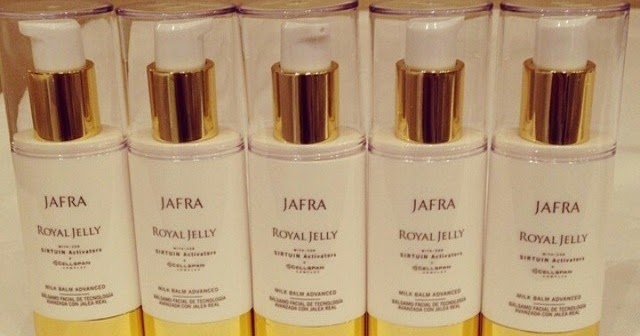
The answer to these riddles is royal jelly, the Queen Mother’s food. Young worker bees secrete a gelatinous cream-colored substance with a tart taste in the throat glands. It is royal jelly that is used to feed the larvae of worker bees and drones during the first 3 days of their life. But the queen bee fed all her life. Royal jelly allows you to produce bees from the same eggs – workers and mothers, that the uterus lives 4-6 years, and the working one – 30-35 days.
What does royal jelly contain?
The chemical composition of royal jelly fed to queen bees is very rich. It includes, among other things, sex hormones, which significantly affects the rate of development of larvae, size, fertility and lifespan. Usually, about 100 g of royal jelly is obtained in one colony during the season from May to the end of July. Royal jelly resembles mammalian milk in the form of a thick paste that varies in color from light cream to light yellow. It is characterized by a tart sour taste and a specific pungent odor, heavier than water, has an acid reaction (pH in the range of 3.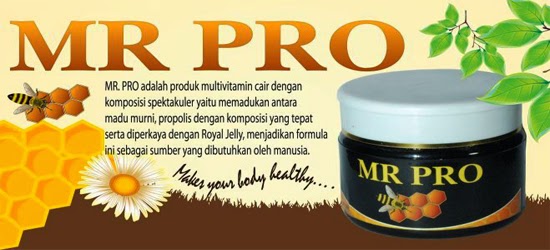 4 – 4.3). It dissolves well in ethyl alcohol, acetone and ether.
4 – 4.3). It dissolves well in ethyl alcohol, acetone and ether.
Collection and storage of royal jelly
Milk is obtained from queen cells from mid-May to the end of July. Beekeepers use various methods of bee mobilization to rear young queen bees to increase the production of royal jelly in the hive. 2-3 day old larvae are fed so abundantly that they “swim” in milk. Thus, the bees feed a dozen or several dozen larvae. From five such cells, about one gram of milk is collected. Royal jelly is an unstable product, it turns yellow and dries quickly when stored at ambient temperature, and its biological activity is reduced due to the decomposition of many components. Bees consume milk regularly, so they do not store it for a long time.
Fresh milk is sensitive to light and high temperatures. In an airtight container, it retains its properties for several days at room temperature. It can be stored in the refrigerator at 0-5°C for up to one year. Milk can be preserved with alcohol. The most commonly used solution is 10% milk in 40% ethyl alcohol. The creation of such a mixture allows you to store the finished product in a sealed vessel in a dark place for one year. An alternative is canned royal jelly with honey. To prepare the mixture, add milk to liquid honey in an amount of 0.5% to 5%, mix thoroughly and for a long time. The most effective mixture was considered honey with the addition of 2% royal jelly. It can be stored in a dark place for a year, and in the refrigerator even longer. Adsorption on powdered lactose gives good results. However, the best preservation method is freeze-drying, which allows storage at 0-15°C for up to 5 years.
The most commonly used solution is 10% milk in 40% ethyl alcohol. The creation of such a mixture allows you to store the finished product in a sealed vessel in a dark place for one year. An alternative is canned royal jelly with honey. To prepare the mixture, add milk to liquid honey in an amount of 0.5% to 5%, mix thoroughly and for a long time. The most effective mixture was considered honey with the addition of 2% royal jelly. It can be stored in a dark place for a year, and in the refrigerator even longer. Adsorption on powdered lactose gives good results. However, the best preservation method is freeze-drying, which allows storage at 0-15°C for up to 5 years.
The action of bee milk
One of the most important biological properties of royal jelly is the enhancement of metabolic processes and tissue renewal. This product enhances protein metabolism, increases the number of red blood cells and hemoglobin levels. It is assumed that the ions of iron and zinc, which are part of its composition, largely contribute to this. During the studies, the subjects experienced rapid weight gain, increased vitality, accelerated puberty, increased reproductive activity and life extension by about 30% compared to control groups. Animal studies show that royal jelly is a nutritious food that is well absorbed by the body. These values are due to the presence of compounds such as amino acids, sugars, vitamins, bioelements, enzymes and free fatty acids.
During the studies, the subjects experienced rapid weight gain, increased vitality, accelerated puberty, increased reproductive activity and life extension by about 30% compared to control groups. Animal studies show that royal jelly is a nutritious food that is well absorbed by the body. These values are due to the presence of compounds such as amino acids, sugars, vitamins, bioelements, enzymes and free fatty acids.
Studies have shown that royal jelly accelerates the recovery of soft tissues, reducing the healing time of wounds and burns. It also affected the renewal of cells responsible for bone tissue healing and prevented bone decalcification after severe fractures. This led to the fact that bone fractures in experimental rabbits healed almost 3 times faster than in control animals.
Royal jelly also has antibacterial properties. The fresh product has a bacteriostatic effect by inhibiting the growth of bacteria at a concentration of 20 mg / ml, and at a concentration of 100 mg / ml it has a bactericidal effect. It acts on both Staphylococcus aureus and split pneumonia, anthrax and tuberculosis bacilli, and E. coli.
It acts on both Staphylococcus aureus and split pneumonia, anthrax and tuberculosis bacilli, and E. coli.
It has been found to inhibit the growth of pathogenic yeasts and moulds. In addition, it is known to be active against influenza, mumps and herpes viruses, as well as against protozoa. 10-hydroxy-2-decenoic acid and royalisin are mainly responsible for the antimicrobial activity.
Royal jelly is good for the heart and circulatory system. Animal experiments show that it accelerates the recovery of necrotic heart tissue after experimental infarction. In addition, it counteracts artificially induced arrhythmias in the heart muscle.
Its action on the blood vessels is twofold. On the one hand, it clearly reduces blood pressure, which is associated with the presence of acetylcholine in it, and on the other hand, it increases it by increasing the secretion of adrenaline. Based on this, it can be assumed that it has the effect of normalizing pressure. Moreover, in experimental animals it has a strong anti-atherosclerotic effect.
Moreover, in experimental animals it has a strong anti-atherosclerotic effect.
The significant effect of royal jelly on the hematopoietic system is often emphasized. Especially small doses of this product, up to 10 mg per day, increase the volume of red blood cells and the level of hemoglobin contained in them, as well as iron in the blood serum.
Animal studies show that parenteral administration of royal jelly stimulates the immune system, thereby increasing the body’s resistance to infection. Despite this, it was found that in diseases caused by autoimmune aggression, that is, self-destruction of organs and tissues, it reduces the production of antibodies against its own cells. Based on this, it can be assumed that it regulates the body’s defenses.
Royal jelly has properties that protect against harmful ionizing radiation, which is mainly due to the presence of 10-hydroxy-2-decenoic acid in it.
Pharmacological studies show that it has a beneficial effect on the central nervous system.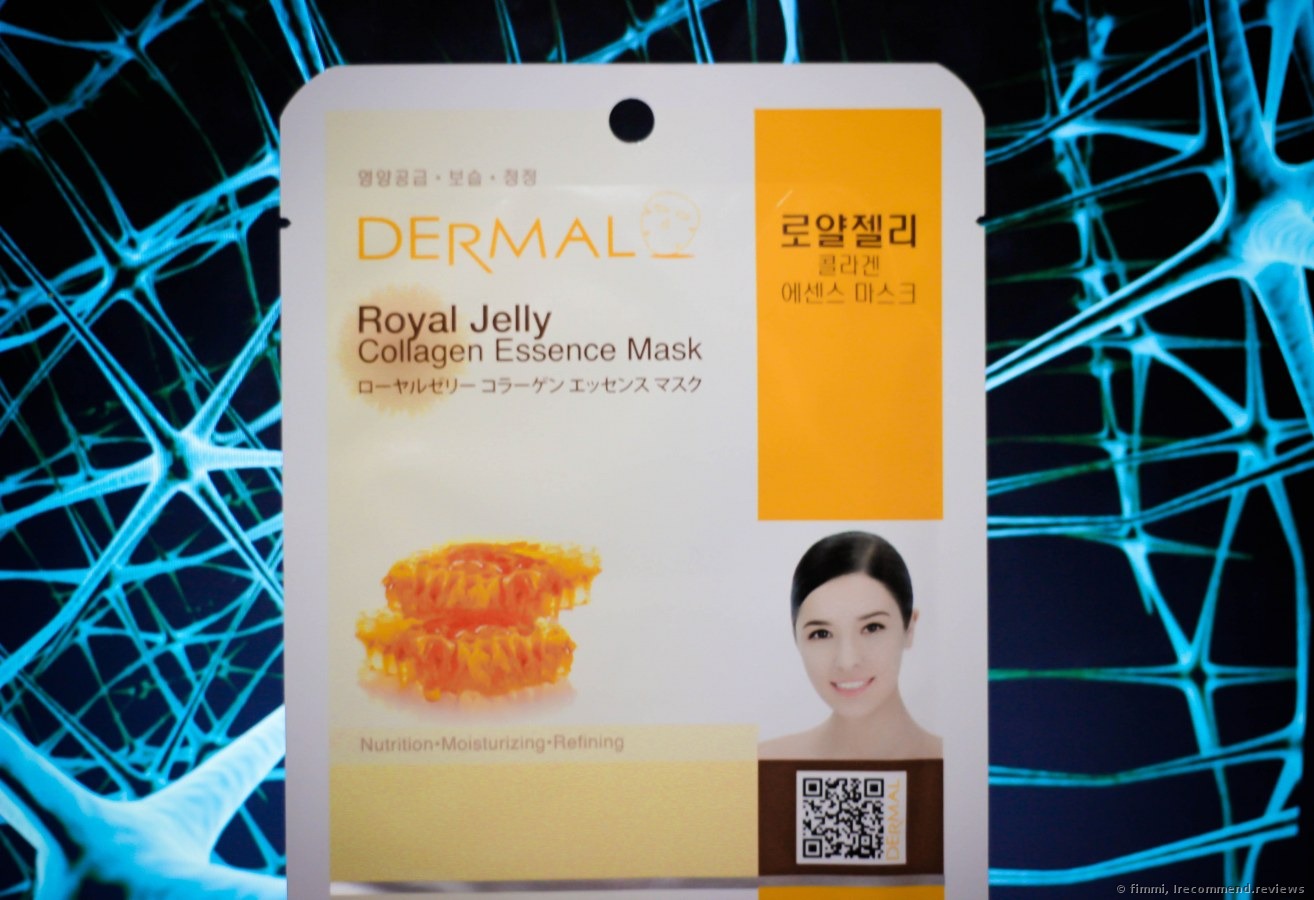 Increases the activity of the cerebral cortex. This action is caused, among other things, by gamma-aminobutyric acid, which plays an important role in the conduction of nerve impulses. As a result, milk causes stimulation and a state of physical and mental recovery.
Increases the activity of the cerebral cortex. This action is caused, among other things, by gamma-aminobutyric acid, which plays an important role in the conduction of nerve impulses. As a result, milk causes stimulation and a state of physical and mental recovery.
Other properties of royal jelly include its anti-diabetic effect, prevention of gout and protection of liver tissue from poisoning by toxic substances.
Medicinal properties and uses in medicine
Royal jelly is widely used in dermatology. It is recommended for the treatment of difficult to heal wounds, including bedsores and burns, with seborrhea and seborrheic eczema, impetigo of the hands and feet. It is also recommended for the treatment of seborrheic and dental alopecia. A good therapeutic effect is achieved after drinking milk with inflammation of the mucous membrane of the mouth, throat, tongue and gums, as well as with herpes.
Increases the body’s resistance to infections. It has an immunoregulatory effect. It causes a significant increase in the body’s resistance to infections by stimulating the production of macrophages and γ-globulin. Due to their immunological properties, they are used in diseases caused by autoimmune aggression, such as glomerulonephritis, atopic (allergic) bronchial asthma and rheumatic diseases.
It has an immunoregulatory effect. It causes a significant increase in the body’s resistance to infections by stimulating the production of macrophages and γ-globulin. Due to their immunological properties, they are used in diseases caused by autoimmune aggression, such as glomerulonephritis, atopic (allergic) bronchial asthma and rheumatic diseases.
In children, royal jelly is used to treat anemia caused by iron deficiency. Increases the number of red blood cells and hemoglobin content.
Royal jelly is used in the treatment of cardiovascular diseases such as angina pectoris, neurosis, post-infarction conditions, arterial hypertension, cerebral embolism, atherosclerosis (dilates blood vessels, lowers blood pressure, lowers cholesterol, increases the flexibility of blood vessels). Favorable results are achieved in the treatment of inflammation of the veins and hemorrhages of vascular origin.
Oral royal jelly has a beneficial effect in coronary heart disease, coronary atherosclerosis and in the rehabilitation period after myocardial infarction. For example, taking 100 mg of royal jelly per day eliminated pain in more than 70% of patients with coronary heart disease in just a month. In addition, there was a decrease in the level of lipids and cholesterol in the blood serum.
For example, taking 100 mg of royal jelly per day eliminated pain in more than 70% of patients with coronary heart disease in just a month. In addition, there was a decrease in the level of lipids and cholesterol in the blood serum.
Good results have been obtained with royal jelly in patients with arterial hypertension and cardiac arrhythmia. It is also successfully used in spastic conditions of the vertebral arteries and cerebral embolism.
Royal jelly is also used for the prevention and treatment of diseases of the digestive tract and internal organs. Duodenal ulcers are particularly sensitive to the effects of this product. It is used in patients with symptoms of colitis and in the treatment of various inflammations of the gallbladder, pancreas and liver. It protects liver tissue from various types of toxic substances. It is used to treat the effects of alcoholism and to prevent cirrhosis of the liver. Effectively lowers blood glucose levels.
It is also used to treat kidney and adrenal insufficiency.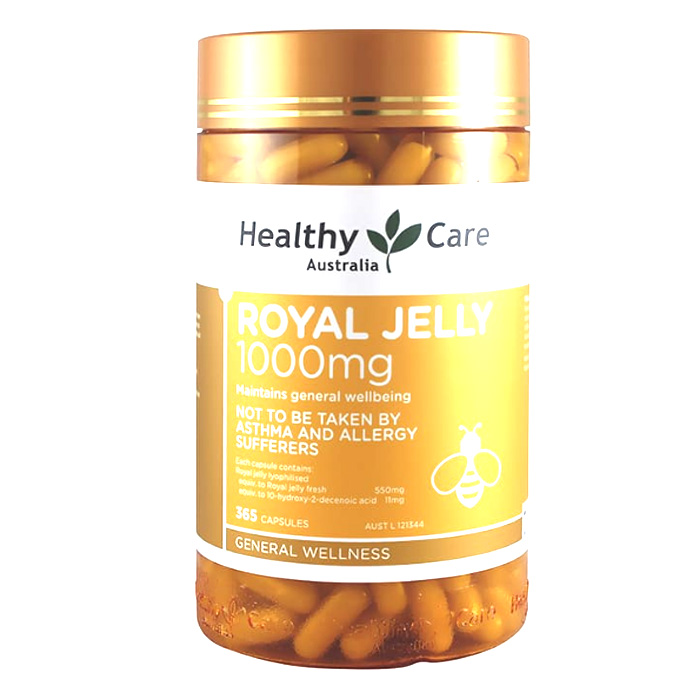 It has a diuretic effect, which helps in the treatment of obesity. It is useful in the treatment of ovarian failure and infectious diseases such as brucellosis and influenza. Royal jelly has also proven beneficial in the treatment of certain respiratory conditions. Milk contributes to the renewal of the bronchial mucosa and promotes better penetration of drugs into the lower respiratory tract. In addition, it is very helpful in the prevention of colds.
It has a diuretic effect, which helps in the treatment of obesity. It is useful in the treatment of ovarian failure and infectious diseases such as brucellosis and influenza. Royal jelly has also proven beneficial in the treatment of certain respiratory conditions. Milk contributes to the renewal of the bronchial mucosa and promotes better penetration of drugs into the lower respiratory tract. In addition, it is very helpful in the prevention of colds.
Royal jelly is successfully used in rheumatic diseases, including rheumatic diseases, rheumatoid arthritis of the spine, osteoarthritis, as well as neuralgia, migraine and post-traumatic pain.
Use in cosmetics
Royal jelly is also widely used in cosmetics. Due to its skin renewal properties, it is an important ingredient in creams, lotions and care and nourishment lotions for dry, normal and oily skin. Creams and balms with royal jelly stimulate cellular metabolism and normalize the secretion of the sebaceous glands. Milk has a beneficial tonic effect on the skin, and also improves its hydration and elasticity. Its content in cosmetic preparations ranges from 0.5 to 10%.
Milk has a beneficial tonic effect on the skin, and also improves its hydration and elasticity. Its content in cosmetic preparations ranges from 0.5 to 10%.
Milk dosage
Royal jelly is available from pharmacies, herbalists and health food stores. It is available in the form of lozenges, capsules and syrup. Preparations containing royal jelly are administered orally, sublingually (this method is considered the most effective). The recommended doses are 50 to 300 mg for an adult, half the dose for children. Use in the morning, 1 hour before breakfast or 2-3 hours after dinner.
Pure milk is best taken sublingually (hold under the tongue for a few minutes) after rinsing the mouth. The course of treatment should last from 3-4 weeks to two months and be repeated once or twice a year. It is recommended to carry out two procedures a year with a preventive purpose, supporting the milk with pollen. A mixture of honey and milk (2 grams of milk per 200 grams of honey). Use a teaspoon of the mixture twice a day.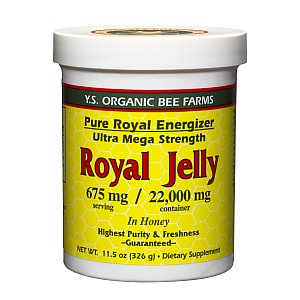 Time: an hour before meals and 2-3 hours after dinner. Use canned milk twice a day, 15-20 drops per tablespoon of warm water, one hour before meals and 2-3 hours after dinner. You can buy a mixture of honey with royal jelly at the link.
Time: an hour before meals and 2-3 hours after dinner. Use canned milk twice a day, 15-20 drops per tablespoon of warm water, one hour before meals and 2-3 hours after dinner. You can buy a mixture of honey with royal jelly at the link.
Royal jelly: useful properties and contraindications
The content of the article:
- Description and healing properties of royal jelly
- When should you use royal jelly
- How to take and store
- Precautions and contraindications when taking royal jelly
Royal jelly, or, as it is also called, “royal jelly”, is one of the most amazing products of beekeeping. The value of this substance cannot be overestimated. It is used to treat numerous diseases and prevent the appearance of disorders in the body. But before you start using milk, read this article and get acquainted with its healing properties and contraindications.
Description and healing properties of royal jelly
A valuable and amazing product of bee production is used by insects to feed young bee larvae, which will subsequently take their place in the hierarchy of industriousness. Milk is characterized by high biological activity. The mass has a thick texture, creamy hue, honey aroma and sour taste. And it has a unique composition!
Milk is characterized by high biological activity. The mass has a thick texture, creamy hue, honey aroma and sour taste. And it has a unique composition!
Royal Jelly contains:
- proteins fats carbohydrates;
- active enzymes;
- some amino acids;
- various trace elements and mineral salts;
- vitamins E, PP and group B;
- hormones and other substances.
But most of the biomass (almost 60% of the composition) is moisture. And 5 percent of the composition of the natural “elixir” remains a mystery.
An interesting fact. Royal jelly is produced by young nurse bees, who secrete it with the help of special glands made from bee bread and honey. Bee larvae receive “royal jelly” during the first three days of life. But the queen bee (the main female of the hive) feeds on it constantly. According to scientists, this explains the huge difference in life expectancy between worker bees and queen bees. The former live on average 70-80 days, the latter – up to 7 years. This is despite the fact that genetically they are the same species. Man, of course, is not a bee. But royal jelly has a beneficial effect on our body.
The former live on average 70-80 days, the latter – up to 7 years. This is despite the fact that genetically they are the same species. Man, of course, is not a bee. But royal jelly has a beneficial effect on our body.
Milk is not only food for young bees and queens. It is widely used in medicine to fight a large number of diseases. The product can also be used in everyday life. Regular use of biomass has a positive effect on the functioning of the immune system, helps to prolong youth, increase mental activity. In addition, royal jelly normalizes blood pressure, improves the condition of blood and blood vessels, activates the process of intellectual and physical development.
The biomass of bee production is widely used in cosmetology. In particular, royal jelly helps to effectively deal with skin imperfections such as acne, psoriasis, neurodermatitis, prolongs the youthfulness of the dermis and improves its condition. The use of the substance is recommended for anorexia, decreased tone, insufficient lactation.
When should royal jelly be used?
Royal jelly should be taken in case of:
diseases of the gastrointestinal tract;
high cholesterol;
diseases of the blood and blood-forming organs;
elevated glucose levels;
general weakening of the body after illness;
the onset of menopause in women;
seasonal drop in the level of immunity in the cold season.
Also, “royal jelly” is recommended for use in diseases of the nervous system, including in case of nervous exhaustion. A unique set of vitamins, acids and microelements contained in royal jelly contribute to the improvement of the general condition of the central and peripheral nervous system of adults and children.
How to take and store the remedy?
It often happens that royal jelly is taken orally. This is mistake! The acid contained in the human stomach neutralizes a significant part of the healing properties of the bee product. To get the maximum effect, the required amount of funds is placed under the tongue and waiting for dissolution. With this technique, valuable components are quickly absorbed into the blood through the vessels located on the back of the tongue.
This is mistake! The acid contained in the human stomach neutralizes a significant part of the healing properties of the bee product. To get the maximum effect, the required amount of funds is placed under the tongue and waiting for dissolution. With this technique, valuable components are quickly absorbed into the blood through the vessels located on the back of the tongue.
A few tips for taking royal jelly:
the recommended amount per day for an adult is 1 ml;
the total volume is divided into 3-4 servings and taken throughout the day;
milk contains tonic components, so the last dose should be no later than 18 pm.
As a rule, the duration of the course is 14 days. A month later, you can start a second course. And during the year to conduct 4-6 courses.
The unique components that royal jelly contains are sensitive to temperature and sunlight. If stored incorrectly, they quickly break down.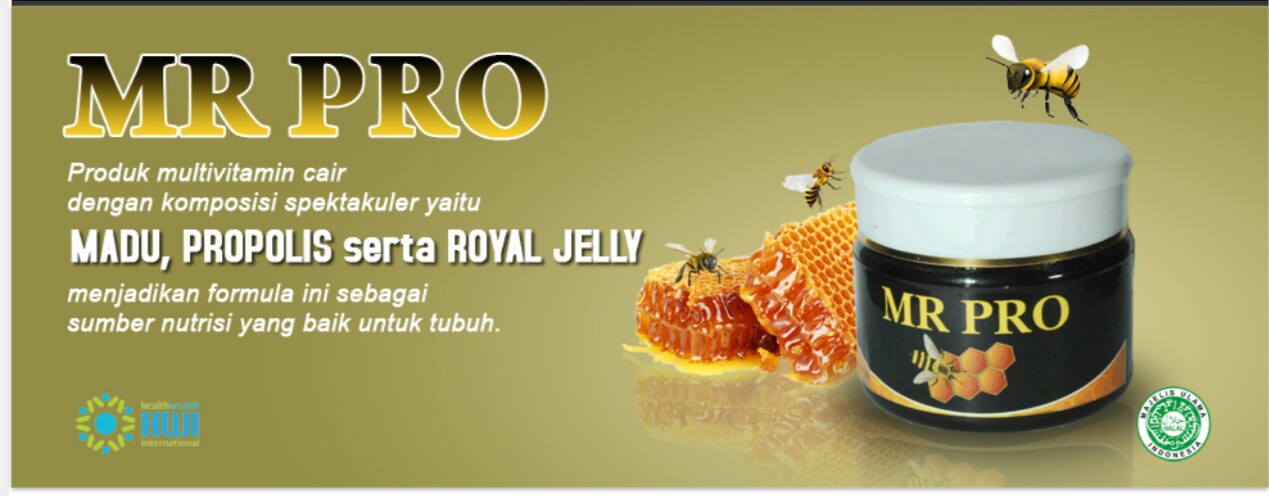 To preserve the healing properties, the necessary conditions should be provided. In particular, the product should be stored in a freezer at -20 ℃. It is very convenient to do this in insulin syringes, the volume of which is 1 ml. Low temperatures stop the process of destruction of vitamins, acids and other ingredients, therefore, in this form, the bee product will retain its benefits for a year or more.
To preserve the healing properties, the necessary conditions should be provided. In particular, the product should be stored in a freezer at -20 ℃. It is very convenient to do this in insulin syringes, the volume of which is 1 ml. Low temperatures stop the process of destruction of vitamins, acids and other ingredients, therefore, in this form, the bee product will retain its benefits for a year or more.
In the evening, on the eve of the reception, 1 syringe is moved to the refrigerator. Overnight, the royal jelly will thaw and be ready to eat. During the day, the bee product must be stored in the refrigerator.
Precautions and contraindications when taking royal jelly
With all its positive effects and benefits, royal jelly also has harm. Bee “drug” can cause dizziness, rash and itching of the skin, redness and nausea. These side effects that occur during the use of royal jelly indicate individual intolerance to the component by a person. “Elixir” is contraindicated in persons with an allergic reaction to any type of bee products and the ingredients they may contain.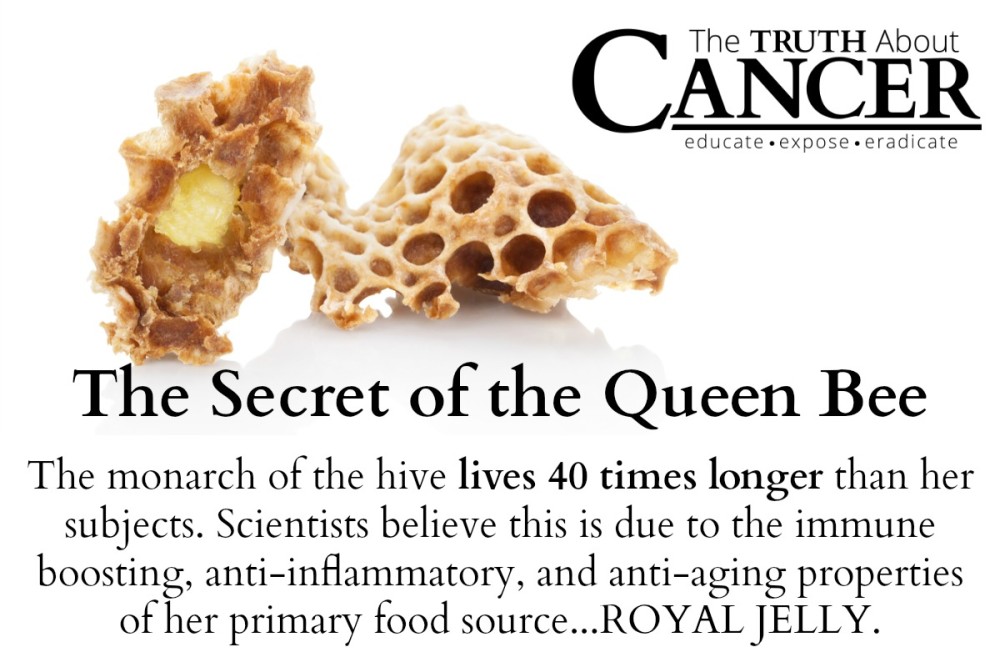

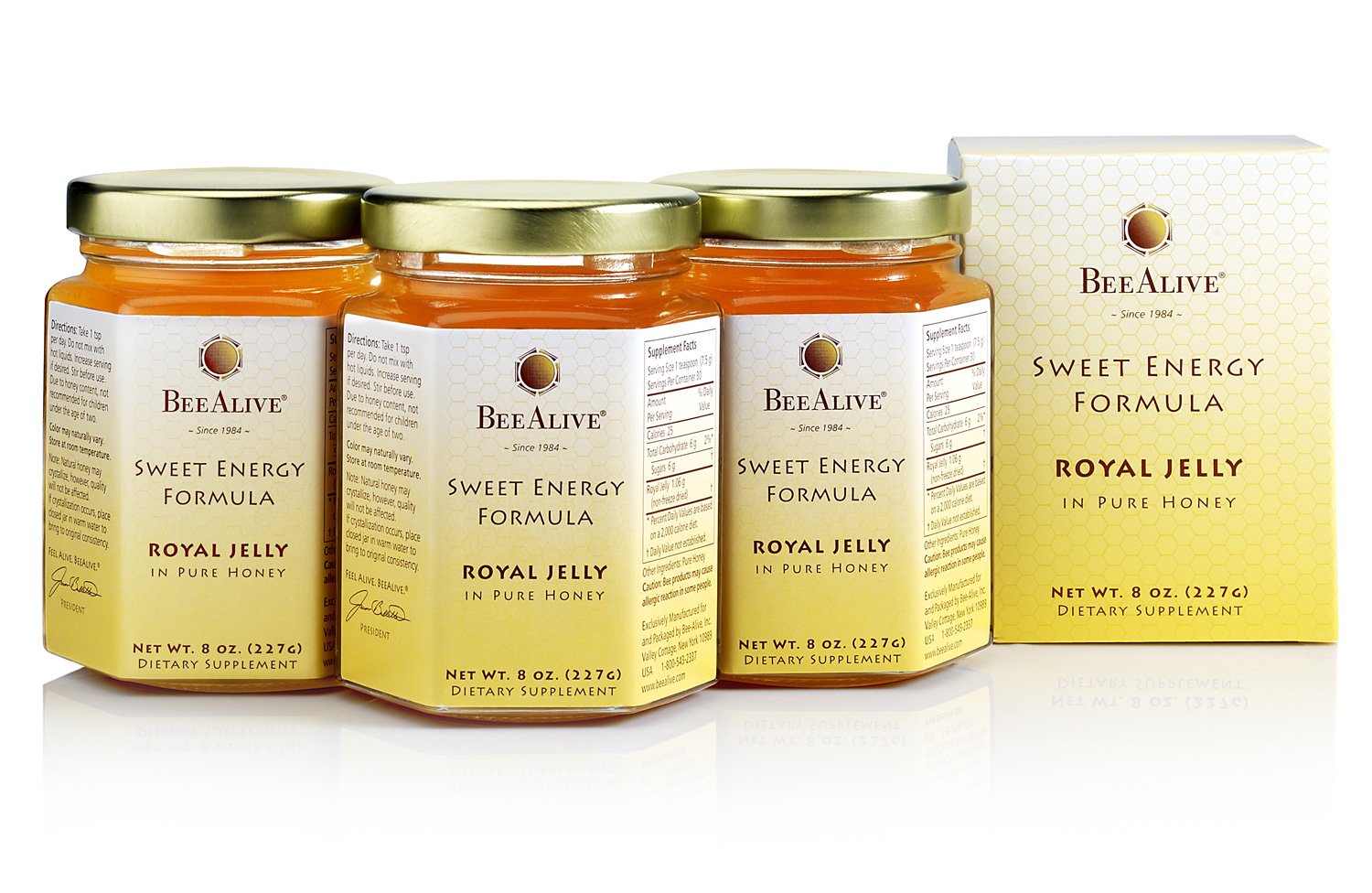
 Taking royal jelly with warfarin might increase the risk of bruising or bleeding.
Taking royal jelly with warfarin might increase the risk of bruising or bleeding.